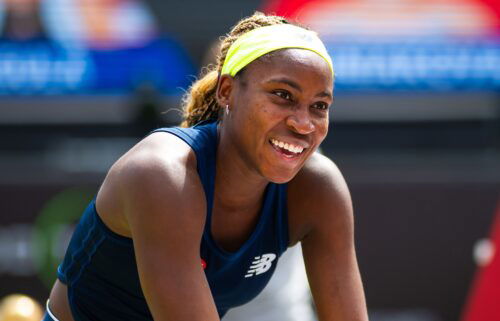England’s Haka response was ‘fantastic,’ says NZ coach Steve Hansen

New Zealand head coach Steve Hansen has described the England team’s controversial response to the All Blacks’ Haka ahead of their Rugby World Cup semifinal as “fantastic.”
While most teams stand in a line while facing the Haka, English players adopted a V-formation with a number of players standing over the halfway line.
England have been fined a reported fee of $2,500 (£2,000) by World Rugby for standing too close to the Haka before Saturday’s clash.
All Blacks hooker Dane Coles called England’s response “awesome,” while head coach Steve Hansen praised the players for standing up to it.
“They didn’t get fined for responding to the haka — they got fined for coming over halfway,” Hanson said.
“Joe (Marler) didn’t go back when he was told two or three times. The haka requires a response. It’s a challenge to you, personally, and it requires a response.
“I thought it was brilliant and quite imaginative, too.”
World Rugby protocols state that no player can stand in the New Zealand half while the Haka is taking place. France was similarly fined $4,000 at the 2011 World Cup after the team advanced over the halfway line during the All Blacks’ ritual pre-match performance.
READ: England stuns New Zealand to book its place in the Rugby World Cup final
Officials tried to make the English team step back, but the players didn’t retreat sufficiently, something that World Rugby says was a “breach of tournament rules relating to cultural challenges, which states that no players from the team receiving the challenge may advance beyond the halfway line.”
England defeated New Zealand 19-7 in Yokohama to set up a final against South Africa, denying the All Blacks the chance to win a third consecutive World Cup title.
A ceremonial Maori war dance performed before each game, the Haka is intended as a challenge to opponents and a rallying cry before heading into battle.
Teams often provide their own riposte, and England’s players said that it was coach Eddie Jones who was behind adopting the V-formation
“Yes, we wanted to be respectful, but we wanted to show that we weren’t just going to sit there and take whatever they had,” said England lock Courtney Lawes.
“We wanted to show we were just as up for the game, and we thought it was a good way of doing that. We didn’t go there to cause any disrespect. We just wanted to show that we were up for the challenge.
“They certainly seemed, as we started moving towards them, they accepted the challenge. I thought it was good.”
READ: Age is just a number when it comes to playing rugby in Japan
At the tips of the V-shaped formation, a group of England players — Marler, Billy Vunipola, Mark Wilson, Elliot Daly, Luke Cowan-Dickie and Ben Youngs — stood in New Zealand’s half.
And Mako Vunipola said fellow prop Marler was responsible for taking the team beyond the halfway line as he wasn’t aware of the rules.
“He said he got confused,” said Vunipola. “He thought he was supposed to go all the way around it and go to their 10-meter line.
“But because of that, he’s the one who has to pay the fine. He dishes it out a lot so the boys would be more than happy if he has to pay it.”
READ: South Africa edges past Wales to reach third Rugby World Cup final
Challenging New Zealand head on
While most teams provide no specific response to the Haka, there is a history of players countering it.
Irish players stood in a figure of eight three years ago in tribute to No. 8 Anthony Foley, the former Ireland international who had died suddenly the previous month.
The first known counter-challenge to the Haka was by Ireland in 1989, when they formed a V-shaped arrow and moved slowly towards until captain Willie Anderson was nose-to-nose with his opposite number.
In 1996, Australia chose to ignore the Haka altogether, instead carrying out warm drills deep in their own half.
READ: ‘Rock-and-roll five-a-side rugby seeking to capitalize on Rugby World Cup success
And in 2008, a face-off between Wales and New Zealand lasted 90 seconds after the All Blacks had finished the Haka. It took much persuasion and whistle blowing from referee Jonathan Kaplan to separate the two teams and get the game under way.
A fired-up Richard Cockerill, making his first test start for England in 1997, famously stood directly in front of his opposite number Norm Hewitt as the Haka was performed. The two players separated after some pushing and shoving and a fiery exchange of words.
In the 2003 World Cup, Tonga upstaged the Haka by performing their “Sipi Tau” war dance simultaneously, instead of waiting until the All Blacks had finished before starting their response.


